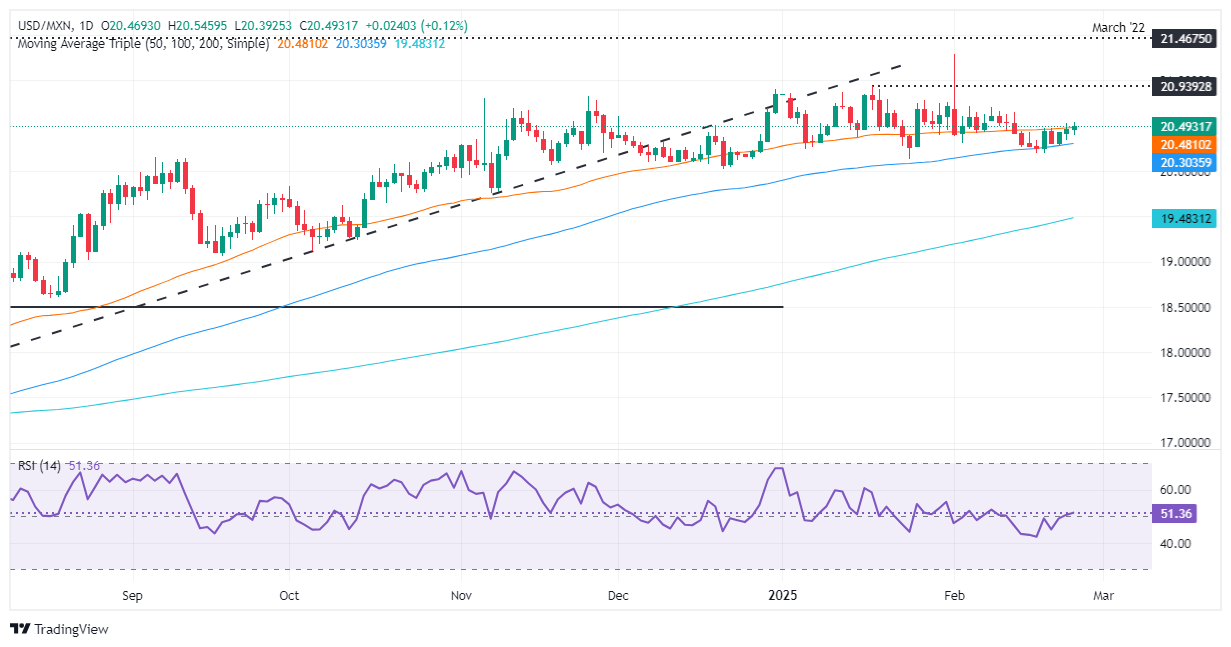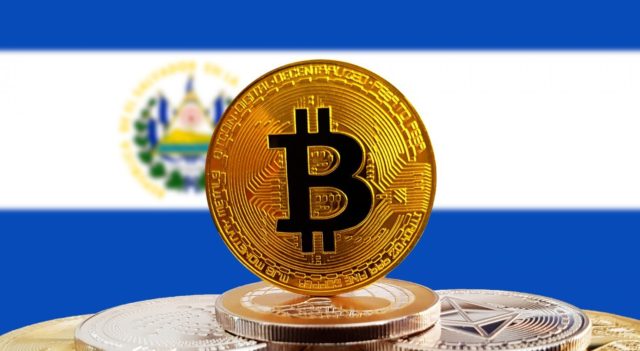- The Mexican weight depreciates as the feeling of the market remains bassist about commercial risks.
- Trump confirms that tariffs on Mexico advance, pressing weight.
- Banxico points out additional 50 bp cuts in interest rates as inflation approaches the 3%target.
- Commercial conversations between the US and Mexico continue, with a possible expected advance for Friday.
The Mexican weight (MXN) extends its losses for the third consecutive day against the dollar after the change of feeling of the market because the president of the United States (USA), Donald Trump, reiterated that the tariffs on Mexico are on the agenda . At the time of writing, the USD/MXN is quoted at 20.49, with a modest increase of 0.11%.
The geopolitics is harming the prospects of the weight, which began Tuesday’s session in a positive way but has lost ground. At the last minute of Monday, President Trump said the tariffs on Mexico are moving forward, at a time when conversations between US officials and Mexico continued.
The Mexican president, Claudia Sheinbaum, said that the ongoing negotiations between the US and Mexico could bear fruit this Friday, when I could maintain a phone call with President Trump.
Although this could be positive for the Mexican currency, the divergence in monetary policy between the two countries could weigh on the weight.
The last inflation report showed that prices converge towards the 3% objective of the Bank of Mexico (Banxico). This, together with the latest minutes of the Banxico meeting that suggest cuts of 50 PB fees, gives the US dollar advantage.
The Federal Reserve (FED) has adopted a “slightly Hawkish” position, since officials are waiting, evaluating US business policies proposed by Trump. Therefore, a greater increase in USD/MXN is expected unless the Fed changes to a dovish posture in the middle of renewed fears of a stagflation scenario.
Meanwhile, Mexico’s current account in the fourth quarter registered a surplus of 12,601 million US dollars, compared to 11,745 million, Banxico revealed.
Daily Markets Summary: The Mexican peso depreciates for US commercial policies and the Dovish Posture of Banxico
- The underlying inflation in mid -February in Mexico increased from 3.61% to 3.63% year -on -year. General prices rose 3.74% year -on -year, as analysts expected.
- Washington is pressing the Mexican government to impose tariffs on Chinese imports to the country.
- Swaps markets suggest that the Federal Reserve could make policy more flexible at 58 basic points, compared to 40 PB last week in 2025, according to data from the Chicago Commerce Board (CBOT).
- Commercial disputes between the US and Mexico are still the center of attention. Although countries found a common land previously, USD/MXN operators should know that the 30 -day break is about to finish, and tensions could trigger volatility in the pair for the rest of the week.
Technical perspective of the USD/MXN: The Mexican weight falls while the USD/MXN exceeds the 50 -day SMA
The USD/MXN pair extended its profits above the single mobile average (SMA) of 50.45, with the exotic pair exceeding 20.50. The Relative Force Index (RSI) above 50 keeps the Happy High Price bulls, although they must exceed the maximum of January 17, 20.93, followed by 21.00 and the maximum of the year to date (YTD) of 21.28 .
On the contrary, if the USD/MXN fights in the 50 -day SMA, it could fall towards the 100 -day SMA in 20.24. In case of greater weakness, the torque could exceed that dynamic support and go towards the figure of 20.00.
Mexican weight FAQS
The Mexican weight (MXN) is the most commercialized currency among its Latin American peers. Its value is widely determined by the performance of the Mexican economy, the policy of the Central Bank of the country, the amount of foreign investment in the country and even the remittance levels sent by Mexicans living abroad, particularly in the United States . Geopolitical trends can also affect MXN: for example, the Nearshoring process (or the decision of some companies to relocate the manufacturing capacity and supply chains closer to their countries of origin) is also considered a catalyst for the currency Mexican, since the country is considered a key manufacturing center in the American continent. Another catalyst for MXN is oil prices, since Mexico is a key exporter of the raw material.
The main objective of the Central Bank of Mexico, also known as Banxico, is %). To do this, the bank establishes an adequate level of interest rates. When inflation is too high, Banxico will try to control it by raising interest rates, which makes the indebtedness of homes and companies more cooling, thus cooling the demand and the economy in general. The highest interest rates are generally positive for Mexican weight (MXN), since they lead to higher yields, which makes the country a more attractive place for investors. On the contrary, lower interest rates tend to weaken the MXN.
The publication of macroeconomic data is key to evaluating the state of the economy and can have an impact on the valuation of the Mexican weight (MXN). A strong Mexican economy, based on high economic growth, low unemployment and high confidence is good for MXN. Not only attracts more foreign investment, but it can encourage the Bank of Mexico (Banxico) to increase interest rates, particularly if this fortress is accompanied by high inflation. However, if the economic data is weak, the MXN is likely to depreciate.
As an emerging market currency, the Mexican weight (MXN) tends to rise for periods of risk, or when investors perceive that the general market risks are low and, therefore, are eager to participate in investments that carry a higher risk . On the contrary, the MXN tends to weaken at times of market turbulence or economic uncertainty, since investors tend to sell higher risk assets and flee to the most stable safe shelters.
Source: Fx Street
I am Joshua Winder, a senior-level journalist and editor at World Stock Market. I specialize in covering news related to the stock market and economic trends. With more than 8 years of experience in this field, I have become an expert in financial reporting.








